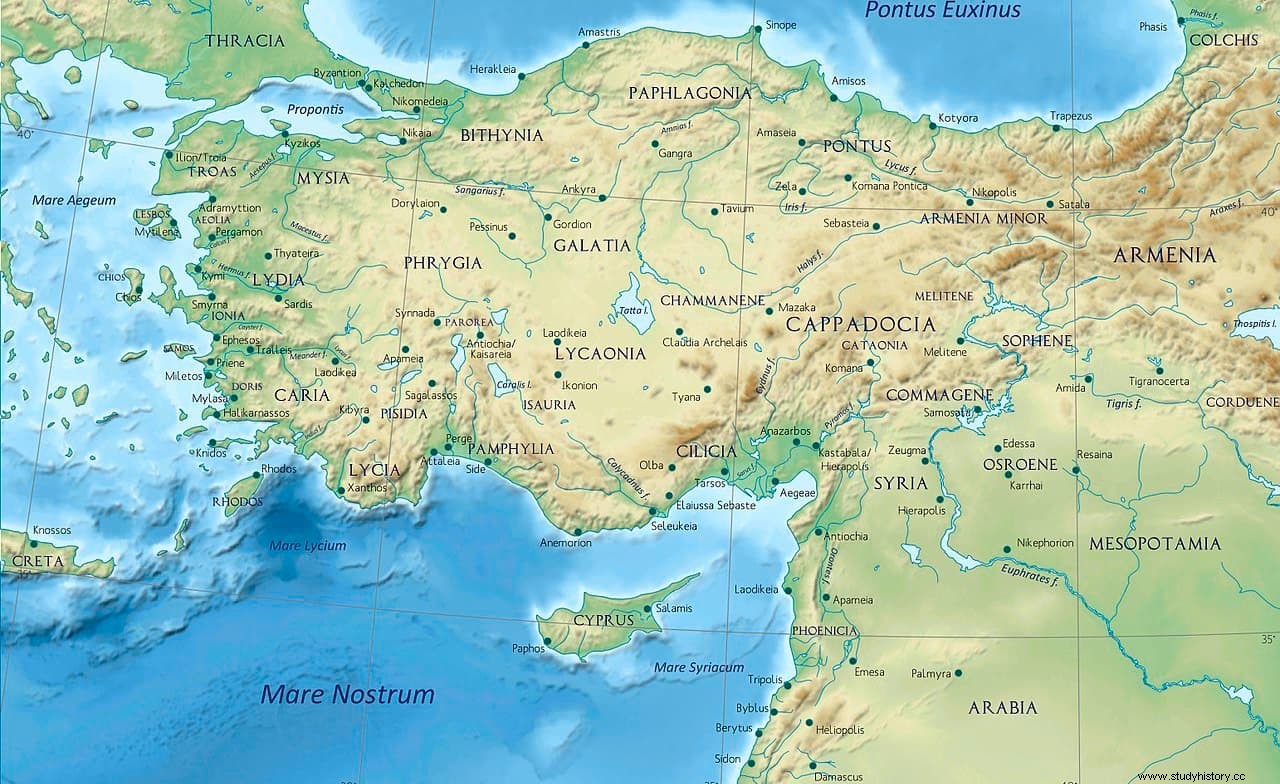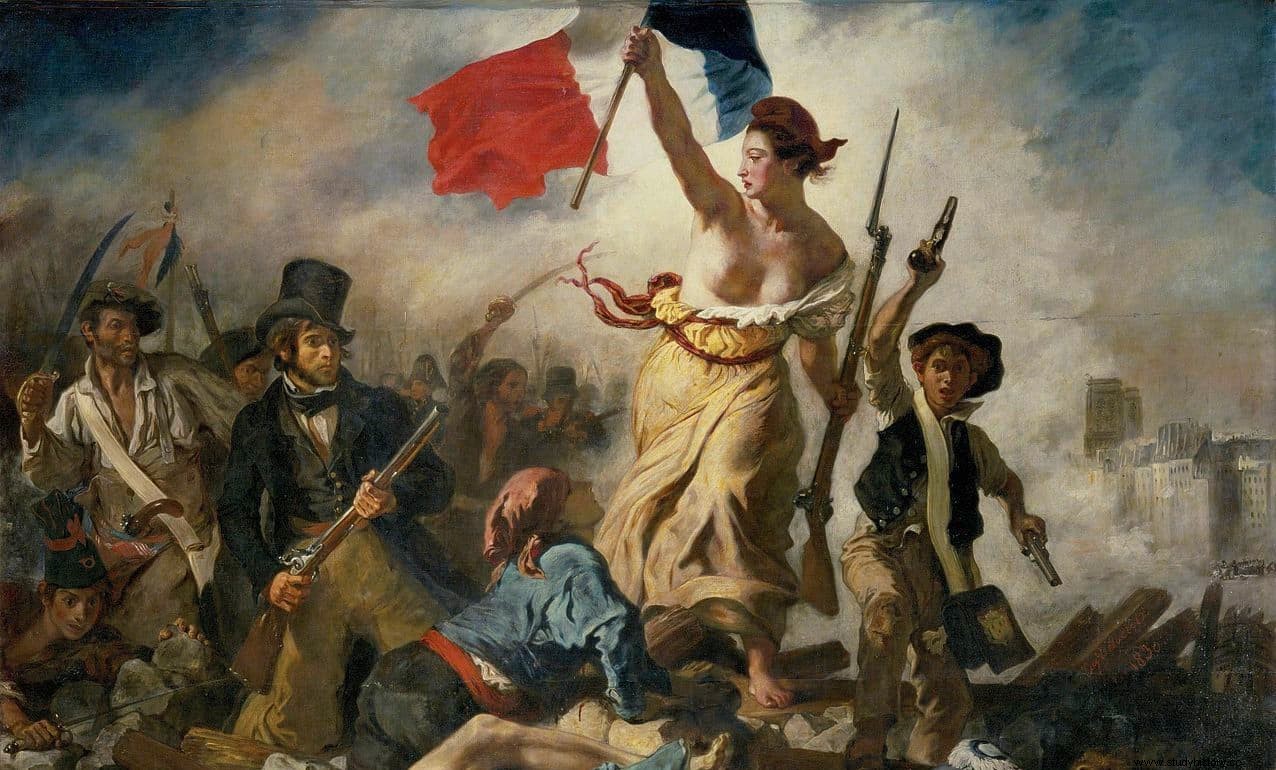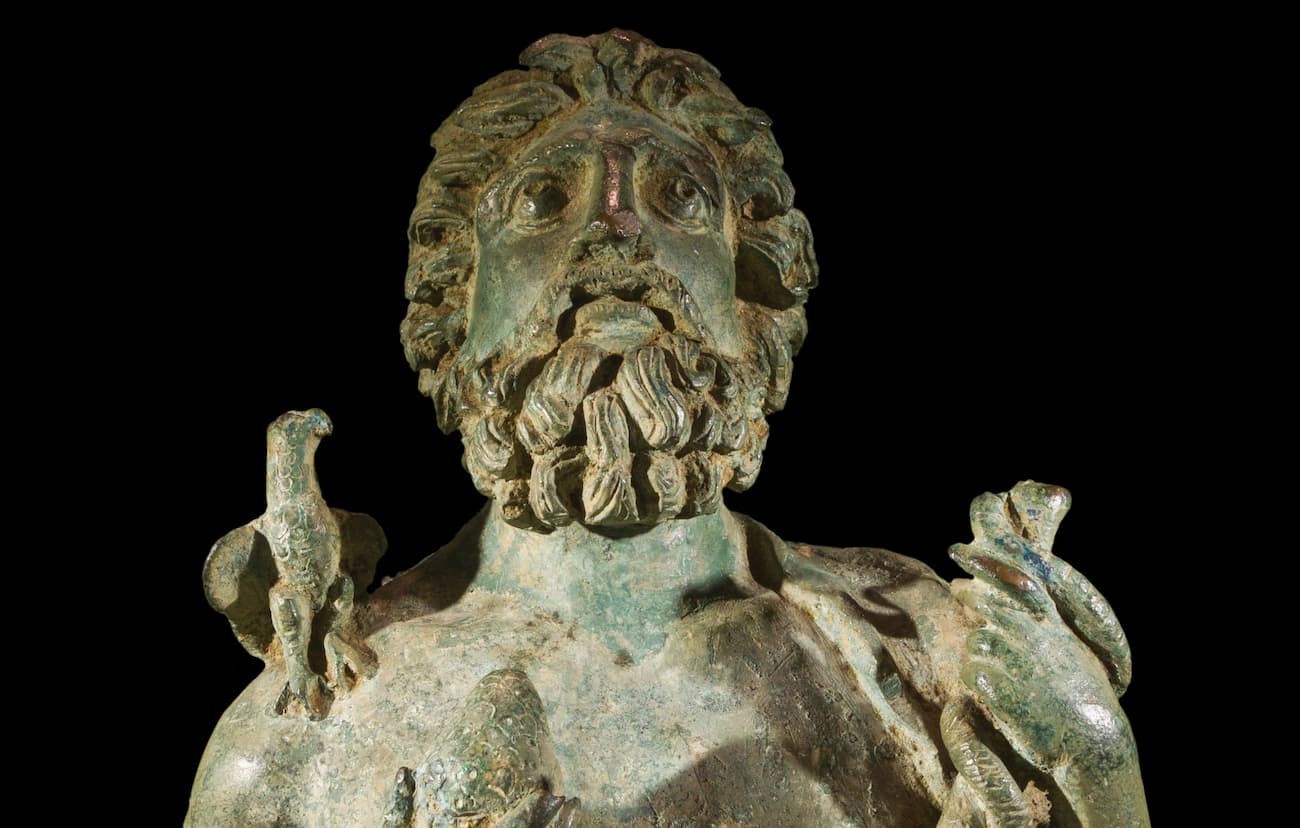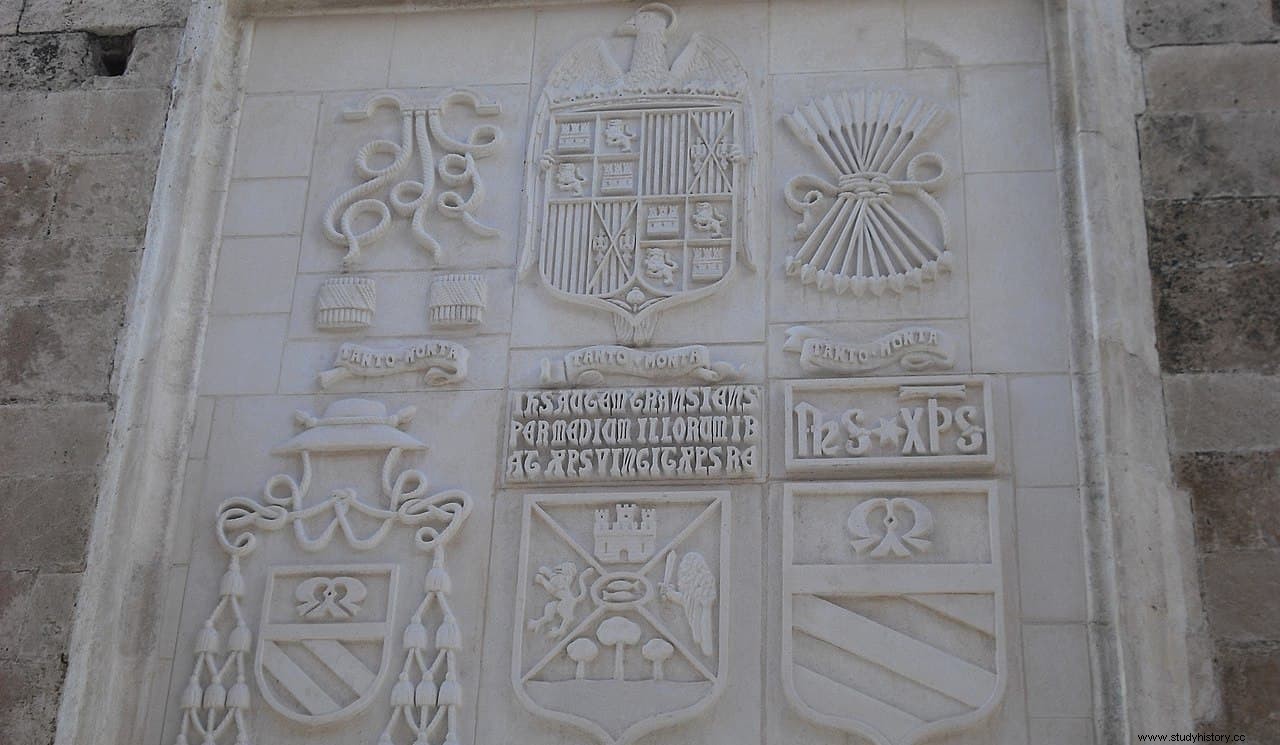The expression Gordian knot It is frequently used to refer to a complex problem and, sometimes, related to it but accompanied by the verb to cut, to a solution as ingenious as it is drastic to solve it. The origin of such a curious term goes back to one of those emblematic episodes that adorned the biography of Alexander the Great and was linked to a classic legend of the Phrygian king Gordias.
You have to go back, of course, to Ancient Greece. Specifically in the 4th century BC, when the famous Macedonian hero arrived in the city of Gordio (or Gordium), capital of the old kingdom of Phrygia (in the current Turkish peninsula of Anatolia) transformed into a homonymous satrapy of the Persian Empire after its conquest in the year 547 BC
It was an important enclave from a strategic point of view, since it was located on the banks of the Sangario river, controlling its ford, and also a branch of the royal road that connected Sardes with Susa passed through there (remains of that road are still preserved, although it corresponds to the one that the Romans built on top).

It is therefore understood that Alexander included Gordio in his list of objectives. He took it in 334 B.C. but that interest that the place had per se , it was even more appealing to him because the famous Gordian knot was kept there, so tangled that it was impossible to undo; as the oracles prophesied, whoever achieved it would become the owner of all of Asia. It was logical, then, that the Macedonian saw in it a golden propaganda opportunity for his expansionist ambitions.
It is impossible to know if the knot in question physically existed or was just a symbol of local royalty, a metaphor to justify the dynastic changes that Gordio underwent in those turbulent times.
In fact, the Phrygian tradition was alien to the monarchical system and that is why, millennia later, the typical hat of that region would be adopted to touch Marianne, the female figure that represented the French Republic in the revolutionary era and until today (although, at Apparently, the revolutionaries adopted the Phrygian cap by mistake, since their original idea was the pileo, a symbol of the freeing of slaves in Rome).

The fact is that the Phrygians did not have a king until the 9th century B.C. the aforementioned Gordias was proclaimed as such. This, in fact, was not blue blood but a simple farmer who entered the city driving his ox cart but the oracle of Telmiso (capital of neighboring Lycia) had predicted that the first man to appear in Gordio in that way should gird the crown Gordias did not find this too surprising because, before, an eagle had perched on his plow until he unhooked the animals and the diviners interpreted it accordingly. The city was founded as such with his name, which along with Midas was common in his descendants.
It was precisely his son Midas, the famous president to whom the god Dionysus, in gratitude for the hospitality shown to his companion Silenus, had granted him the power to turn everything he touched into gold, who originated the legend of the knot. Midas, whose chronology is confusing because history places him between 740 and 696 BC, therefore somewhat later than the mythological chapter, offered his father's chariot to Sabacio, the Phrygian telluric god who was assimilated now to Zeus now to Dionysus. He tied it to the yoke with which he harnessed the oxen using a thick rope made of dogwood bark, with which he tied several knots so tight and intricate on the chariot pole that they were impossible to undo.

The vehicle, with its tether, was still there when Alexander arrived four centuries later ready to release it to fulfill the aforementioned legend about the domination of Asia. There are several sources that recount the incident:the Greek Lucio Flavio Arriano does it in his work Anabasis Alexandri (2nd century AD) while the Roman Quintus Curtius Rufus begins his Historiae Alexandri Magni Macedonis (1st century AD) with this anecdote, the also Latin Marco Juniano Justino reviews it in Epitoma Historiarum Philippicarum Pompeii Trogi (2nd-3rd centuries AD) and a third Roman historian, Claudius Aelianus, cites it in De Natura Animalium (3rd century AD). He also appears in the Life of Alexander , corresponding to the Parallel Lives from Romanized Greek Plutarch, who echoes a quote from Phocian Aristobulus of Cassandrea, one of the Macedonian officials, whose text on the matter has been lost.
These fonts have some differences between them. One says that Alexander first tried to untie the knot but found no ends to pull on. Others say that he managed to solve the problem by separating the knot from the stick and thus achieving whips to pull. However, the version that made the most sense and has transcended was the popular one:the Macedonian analyzed the situation and finally, exclaiming «It's as good to cut as it is to untie!» , he severed it with a sword cut.
The phrase would be collected in the fifteenth century by Fernando el Católico , King of Aragon, who incorporated it into his coat of arms, surely at the suggestion of the humanist Elio Antonio de Nebrija. Apart from the quote, he also adopted, as an iconographic element, the yoke; after all, the Y was the initial of Isabel, who in correspondence did the same as hers in her emblem with a bundle of arrows (for the F of Fernando). The common people would later convert the Tanto monta in a reversible phrase by adding “he rides so much” and it was even finished off with the rhyme «…Isabel as Fernando» .

As to whether or not the knot physically existed, we said there is no way of knowing. There are those who believe so, that it could have been a symbolic religious object of the Phrygian monarchy wrapped in its corresponding mythological halo. The possibility is even pointed out that it was a way of representing the indecipherable name of Dionysus (remember, the mysterious divinity assimilated to Sabacio who had distinguished Midas), transmitted from generation to generation among the local priestly class. However, others believe that it was only a metaphor to legitimize the new dynasty, perhaps because it is related to a similar Macedonian legend; there are more examples of this in history, one of the best known being the sword Excalibur .
The fact is that the oracle proved to be right and the prophecy was fulfilled:that night Zeus approved Alexander's unusual initiative with a lightning storm and the Macedonian continued his unstoppable campaign, conquering Asia as far as the Indus.
